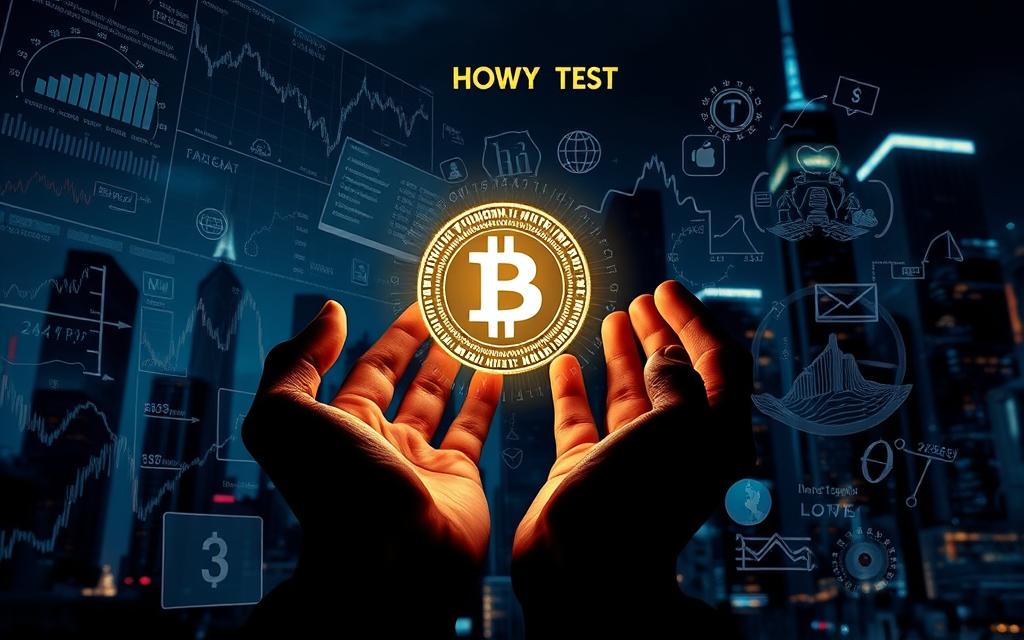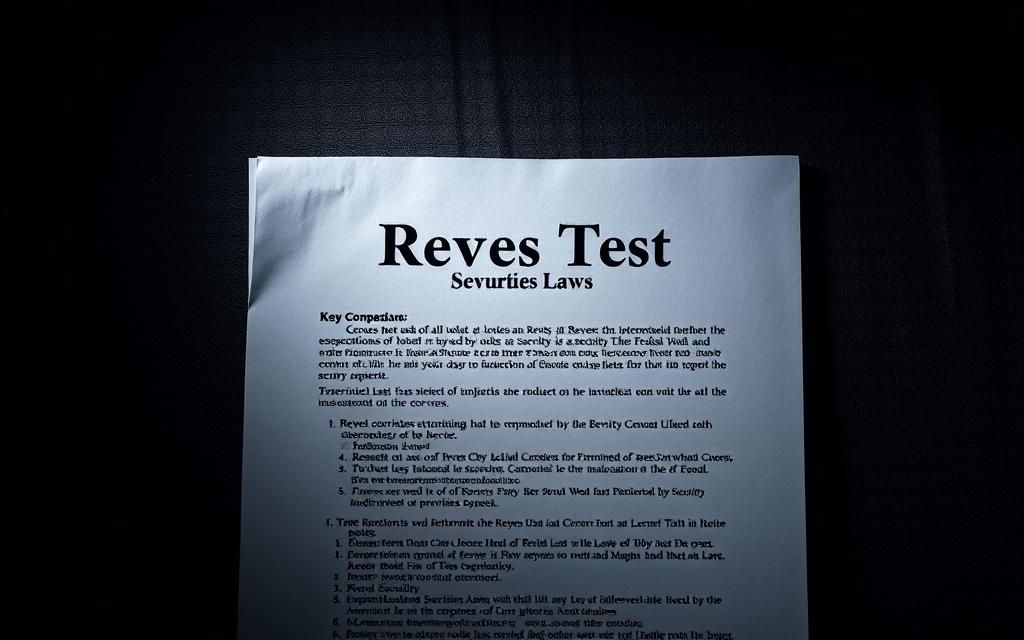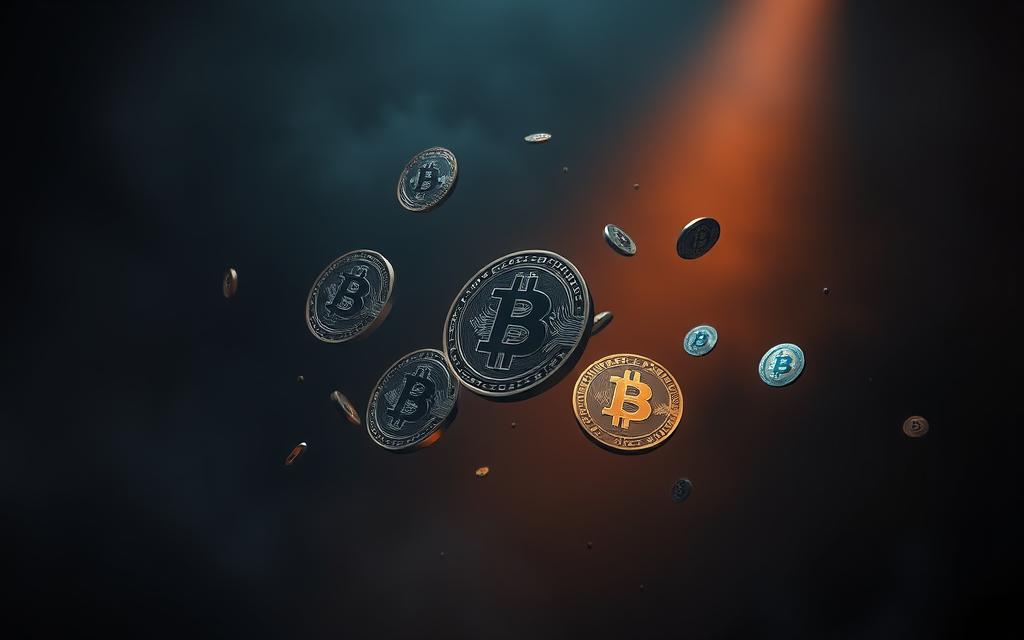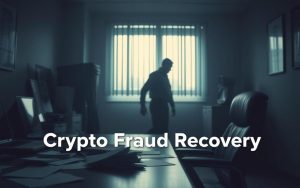Table of Contents
Digital assets face regulatory uncertainty in the U.S. financial system. Regulators struggle to categorize these innovative instruments under existing frameworks.
The SEC applies different standards depending on asset characteristics. Some tokens function like traditional securities, while others resemble commodities. This distinction creates compliance challenges for projects.
In 2018, former SEC official William Hinman suggested Bitcoin and Ether might not qualify as securities. His speech established important guidance still referenced today. However, newer tokens often face stricter scrutiny.
Two legal tests determine classification: the Howey Test and Reves Test. These examine investment contracts and note-like instruments. Projects must understand these standards to navigate regulations properly.
Global approaches vary significantly, influencing U.S. policy decisions. Recent enforcement actions demonstrate the SEC’s evolving stance on digital asset oversight.
Understanding Crypto Assets and Securities
Blockchain-based digital instruments have transformed modern finance, yet their legal classification remains complex. These innovations, often called crypto assets, rely on distributed ledger technology (DLT) to enable peer-to-peer transactions without intermediaries. Their diverse functionalities challenge existing securities laws, requiring nuanced analysis.
Definition of Crypto Assets
Crypto assets are programmable digital instruments that operate on decentralized networks. They fall into four primary categories:
| Type | Description | Examples |
|---|---|---|
| Native Coins | Blockchain’s base currency | Bitcoin (BTC), Ether (ETH) |
| Tokens | Built on existing blockchains | ERC-20 tokens |
| Stablecoins | Price-pegged assets | USDC, Tether |
| NFTs | Unique digital identifiers | Art, collectibles |
Unlike traditional stocks, native coins like Bitcoin serve as both a medium of exchange and store of value. Tokens, however, often represent utility or ownership rights within specific platforms.
What Constitutes a Security Under U.S. Law?
The SEC defines federal securities under the 1933 Act as instruments involving an investment of money in a common enterprise with profit expectations. Key tests include:
- The Howey Test for investment contracts
- The Reves Test for note-like instruments
Stablecoins blur lines between currencies and securities, while NFTs face scrutiny for potential fractional ownership. DeFi projects, lacking centralized control, present unique regulatory gray areas. Over 95% of digital assets remain unregistered, highlighting compliance gaps.
The Howey Test: Decoding “Investment Contracts”
The 1946 Howey decision remains central to today’s asset classification debates. This Supreme Court ruling created a four-part framework to identify investment contracts. Regulators still apply it to digital assets, despite technological evolution.
Key Factors of the Howey Test
An asset qualifies as a security if it meets all four criteria:
- Money investment
- Common enterprise
- Profit expectation
- Reliance on others’ efforts
The SEC used this test in 2017 to declare DAO tokens securities. Marketing materials promising returns often trigger scrutiny.

Application to Crypto Asset Offerings
Presale token offerings frequently fail the Howey analysis. Telegram’s $1.7B ICO settled after the SEC argued investors expected profits from its team’s work.
Utility tokens might avoid classification if they:
- Function immediately within a platform
- Lack promotional ROI claims
- Operate without centralized control
Courts still debate whether blockchain networks constitute a common enterprise. Recent rulings suggest tokens may transition to non-security status post-launch.
SEC’s Evolving Stance on Crypto Classification
Regulatory clarity for digital assets remains a moving target in U.S. markets. The securities exchange commission has adjusted its approach multiple times since 2017, creating a complex compliance landscape.
Bitcoin and Ether: Non-Security Precedents
Former SEC official William Hinman’s 2018 speech established critical guidance. He suggested Bitcoin and Ether might not qualify as securities due to their decentralized nature. This position created a regulatory safe harbor for major cryptocurrencies.
Ethereum’s transition to proof-of-stake governance tested these boundaries. The securities exchange commission hasn’t challenged ETH’s status despite its changing consensus mechanism. Network metrics like node distribution and development decentralization factor heavily into these determinations.
Case Studies: ICOs vs. Decentralized Tokens
Enforcement actions reveal stark contrasts in treatment. The SEC imposed a $22M penalty against LBRY for unregistered token offerings, while Telegram abandoned its GRAM token entirely. Both cases involved promises to investors about future profits.
Recent scrutiny extends beyond traditional crypto assets:
- Stablecoin operators now face demands to prove 1:1 reserve backing
- NFT projects offering fractional ownership face securities claims
- The TerraUSD collapse triggered calls for stablecoin-specific rules
These developments show the market adapting to regulatory pressure points. Projects achieving “sufficient decentralization” may avoid securities classification, though the threshold remains undefined.
The Reves Test and Other Regulatory Frameworks
Multiple legal standards govern digital asset classification across jurisdictions. While the Howey Test dominates discussions, the Reves Test offers alternative analysis for debt-like instruments. These frameworks coexist under the securities act 1933, creating layered compliance requirements.

Comparing Howey and Reves
The Reves Test examines four factors for note-like instruments:
- Motivations behind transactions
- Distribution plan to investors
- Public profit expectations
- Risk reduction methods
Unlike Howey’s investment contract focus, Reves applies a “family resemblance” test. It presumes notes are federal securities unless resembling exempted instruments like short-term commercial paper.
Texas State Securities Board enforces unique rules through its Texas Securities Act. Their 2022 action against BlockFi highlighted state-level variations in applying securities laws.
State-Level Securities Laws
Blue sky laws create additional compliance layers beyond federal standards. New York’s Martin Act enabled a $30M settlement with Bitfinex for unregistered transactions.
Key state approaches include:
- Wyoming’s DAO LLC recognition
- California’s stricter disclosure rules
- Florida’s alignment with SEC guidance
The CFTC simultaneously asserts jurisdiction over commodities-like tokens. This regulatory overlap forces projects to analyze multiple frameworks when structuring offerings.
Token Types and Their Legal Implications
Not all tokens are created equal under U.S. securities regulations. Projects must navigate distinct compliance requirements based on their token design and intended use. This classification impacts everything from fundraising to secondary market trading.
Utility Tokens vs. Security Tokens
Utility tokens provide access to blockchain services rather than profit shares. Filecoin’s FIL tokens, for example, enable decentralized storage purchases. These often avoid securities status if they:
- Operate on live networks (not pre-launch promises)
- Lack centralized profit guarantees
- Serve immediate functional purposes
In contrast, security tokens represent ownership or revenue rights. These require Regulation D exemptions under the securities act 1933. Key differences include:
| Feature | Utility Token | Security Token |
|---|---|---|
| Primary Use | Network access | Investment vehicle |
| Regulation | Possible exemption | Mandatory registration |
| Example | Basic Attention Token | Blockstack’s STX |
Stablecoins and NFTs: Unique Considerations
Stablecoins face scrutiny over reserve backing and investment claims. Tether’s $41M CFTC penalty revealed gaps in asset verification. Only 40% of stablecoins maintain full 1:1 reserves, per 2023 audits.
NFTs encounter legal gray areas when fractionalized. The SEC flagged fractional NFT sales as potential securities in 2022. However, non-fractionalized art NFTs generally avoid classification due to their singular value proposition.
MakerDAO’s DAI model demonstrates compliant structuring. Its overcollateralization with ETH maintains price stability without promising returns. This contrasts with algorithmic stablecoins like TerraUSD, which collapsed after failing to sustain its peg.
Is Crypto a Security? Context Matters
Determining whether digital assets qualify as securities involves careful analysis of multiple factors. Regulatory decisions often hinge on specific project characteristics rather than blanket classifications. The SEC evaluates each case individually, creating a nuanced landscape for market participants.

Factors Influencing SEC Determinations
Several key elements shape regulatory decisions about digital instruments:
- Project maturity: Fully operational networks face less scrutiny than pre-launch ventures
- Investor reliance: Greater dependence on promoter efforts increases securities risk
- Marketing claims: Promises of returns trigger immediate regulatory attention
Secondary market listings also impact classification. The SEC’s “investment ecosystem” theory suggests tokens traded like stocks may face securities claims. Recent guidance from legal experts highlights this evolving approach.
Recent Enforcement Actions as Guidance
2023 saw record SEC activity with enforcement actions increasing 183%. Notable cases provide practical insights:
| Case | Key Issue | Outcome |
|---|---|---|
| Binance | Unregistered exchanges | $4.3B global settlement |
| Coinbase | Jurisdictional arguments | Ongoing Wells Notice response |
| Kraken | Staking services | Service shutdown |
These actions demonstrate the SEC’s focus on platforms facilitating trading of potentially unregistered securities. The agency has collected $5B in penalties since 2018, signaling stricter enforcement.
Projects must carefully balance innovation with compliance. Proper structuring from inception can prevent costly legal challenges down the road. Understanding these regulatory dynamics helps navigate the complex digital asset landscape.
Investor Risks in Unregistered Crypto Securities
Investors face unique threats when dealing with non-compliant blockchain offerings. Without SEC oversight, these market participants lose critical investor protection mechanisms. Recent data shows 80% of projects operate without audited financials, hiding critical risks.

Critical Disclosure Deficiencies
Traditional securities require Form S-1 filings detailing:
- Financial statements
- Management backgrounds
- Risk factor disclosures
Unregistered offerings skip these safeguards. The Celsius Network collapse revealed $1.2B in hidden liabilities. FTX’s missing $8B in customer funds showed how absent disclosures enable mismanagement.
| Disclosure Type | Registered Offerings | Unregistered Projects |
|---|---|---|
| Financial Audits | Mandatory quarterly | Rarely provided |
| Executive Compensation | Fully disclosed | Often opaque |
| Related Party Transactions | Detailed reporting | Frequently hidden |
Fraud Vulnerabilities in Unregulated Markets
Pump-and-dump schemes plague digital asset activities. Researchers estimate 51% of NFT volume involves wash trading. QuadrigaCX’s mysterious cold wallet disappearance cost users $190M.
Common fraud patterns include:
- Influencer promotion of unreviewed projects
- Fake trading volume generation
- Undisclosed token allocations to insiders
The SEC’s 2023 enforcement actions targeted these market manipulation tactics. Projects like Titan Protocol collapsed after artificial price inflation.
“Unregistered offerings create perfect conditions for fraud. Investors get no verified information about the people taking their money.”
Rug pulls remain particularly devastating. Developers abandon projects after fundraising, leaving tokens worthless. Identification strategies include checking:
- Team doxxing status
- Smart contract audits
- Liquidity lock periods
These risks underscore why investor protection frameworks exist. While innovation continues, compliance with rules separates sustainable projects from predatory schemes.
Compliance Pathways for Crypto Projects
Registration exemptions offer flexible pathways for compliant fundraising. The securities act provides structured options for projects navigating U.S. regulations. Understanding these frameworks helps balance innovation with legal requirements.
SEC Registration Exemptions
Projects can leverage three key exemptions under current rules:
| Exemption | Capital Limit | Investor Type | Disclosure Requirements |
|---|---|---|---|
| Regulation A+ | $75M/year | Public | Qualified offering circular |
| Regulation D 506(c) | Unlimited | Accredited only | Form D filing |
| Regulation CF | $5M/year | Retail | Financial statements |
International offerings may qualify under Regulation S. This exempts non-U.S. sales from registration requirements. The SAFT framework remains controversial, with the SEC rejecting several filings.
Best Practices for Token Issuers
Leading projects implement multilayered compliance strategies:
- Governance transparency with published development roadmaps
- Third-party audits for smart contracts and treasury activities
- Chainalysis monitoring for suspicious transactions
- Fireblocks custody solutions for asset protection
Proof-of-Stake networks face additional scrutiny. Legal opinion letters help clarify classification status before launch. DAOs should establish tax compliance protocols early.
“Proper structuring from day one prevents regulatory headaches later. Exemptions aren’t loopholes – they’re designed for responsible innovation.”
Ongoing monitoring ensures continued adherence to evolving rules. Projects combining technical safeguards with legal diligence navigate compliance most effectively.
The Role of Decentralization in Classification
Decentralization plays a pivotal role in determining regulatory classifications for blockchain-based instruments. Projects with distributed governance often face different legal scrutiny than centralized entities. The SEC evaluates these factors to assess whether an asset qualifies as a security.
Measuring Decentralization: SEC’s Criteria
Former SEC official William Hinman outlined six questions to evaluate decentralization:
- Node distribution across the network
- Token holder voting rights
- Development team influence over upgrades
Ethereum’s 1.8 million validators demonstrate broad participation, unlike Bitcoin’s three dominant mining pools. This dispersion reduces reliance on any single entity’s control.
Ethereum’s Transition as a Model
The shift to proof-of-stake highlighted key governance challenges:
- Validator slashing for malicious acts
- Proposal approval timelines
- Treasury management transparency
MakerDAO’s disputes over collateral ratios and Uniswap’s token-based voting show evolving decentralized decision-making. These models inform regulatory expectations for similar projects.
“A sufficiently decentralized network may not meet the Howey Test’s ‘reliance on others’ prong.”
Compound’s 7-day proposal lifecycle contrasts sharply with centralized exchanges’ instant policy changes. This distinction affects how regulators classify their native assets.
Future of Crypto Regulation in the U.S.
Regulatory frameworks for digital assets continue evolving rapidly across jurisdictions. The U.S. market faces pivotal changes with proposed legislation and updated agency guidelines reshaping compliance landscapes.
Pending Legislation and SEC Guidelines
The Lummis-Gillibrand bill proposes comprehensive classification standards for digital assets. Key provisions include:
- Clear division between securities exchange and commodity oversight
- Tax treatment adjustments for small transactions
- New disclosure requirements for stablecoin issuers
SEC’s 2023 custody rule expansion now covers all digital assets. This change forces institutions to:
| Requirement | Impact | Deadline |
|---|---|---|
| Qualified Custodian Use | Affects $12B in institutional holdings | April 2024 |
| Audit Trail Documentation | Adds 40+ hours compliance work monthly | Ongoing |
| Insurance Minimums | 5% reserve coverage mandate | June 2025 |
Global Regulatory Trends and Impacts
EU’s MiCA framework takes full effect in 2024, creating ripple effects. The policy establishes:
- Licensing requirements for all VASPs
- Stablecoin issuance caps
- Mandatory transaction monitoring
Asia presents contrasting approaches:
- Hong Kong allows retail trading with strict KYC
- UAE implements progressive ADGM framework
- China maintains mining bans despite HK policies
FATF’s updated VASP guidance now includes:
“Cross-border cooperation will intensify as 31 nations implement the travel rule. Expect shared enforcement actions targeting non-compliant platforms.”
These global shifts pressure U.S. regulators to accelerate policy development. The CFTC’s expanded derivatives oversight signals growing institutional acceptance.
Conclusion
Projects must balance innovation with compliance as rules evolve. Token classification depends on use cases, decentralization levels, and marketing claims. Securities laws apply when investors expect profits from others’ efforts.
Global regulations vary widely, creating complex cross-border challenges. Non-compliance risks severe penalties, including service bans. Proactive legal reviews help navigate these shifting requirements.
Institutional participation grows as frameworks mature. Standardized rules could reduce fragmentation. Until then, understanding context remains critical for sustainable blockchain development.
FAQ
How does the SEC determine if a digital asset is a security?
The SEC applies the Howey Test, evaluating whether an asset involves an investment of money in a common enterprise with an expectation of profits derived from others’ efforts. Factors like marketing, governance, and investor reliance influence classification.
Are Bitcoin and Ethereum considered securities?
The SEC has stated Bitcoin is not a security due to its decentralized nature. Ethereum initially faced scrutiny but gained similar treatment as its network became more decentralized. Most altcoins, however, remain under regulatory review.
What’s the difference between utility tokens and security tokens?
Utility tokens provide access to a product or service, while security tokens represent ownership or profit-sharing rights. The latter typically fall under securities laws, requiring SEC registration unless exempt.
Can stablecoins or NFTs be classified as securities?
Stablecoins pegged to fiat currencies often avoid security status if they lack profit expectations. NFTs are generally treated as collectibles, but fractionalized NFTs or those marketed as investments could trigger securities laws.
What penalties exist for selling unregistered crypto securities?
Violations may result in SEC enforcement actions, including fines, disgorgement of profits, and operational restrictions. Projects like Telegram’s TON faced injunctions for non-compliance with the Securities Act of 1933.
How does decentralization affect a token’s legal status?
Greater decentralization reduces reliance on a central team, a key Howey Test factor. Ethereum’s shift to proof-of-stake illustrates how reduced developer control can reinforce non-security arguments.
What exemptions allow crypto projects to avoid full SEC registration?
Regulations D (506c), A+, and CF Crowdfunding provide pathways for limited offerings. Each has investor caps or accreditation requirements, balancing capital access with investor protection.
How do global crypto regulations compare to U.S. rules?
The EU’s MiCA framework and Singapore’s Payment Services Act offer clearer guidelines, while the U.S. relies on existing securities laws. Cross-border projects must navigate conflicting standards.









